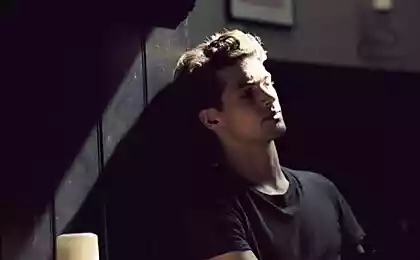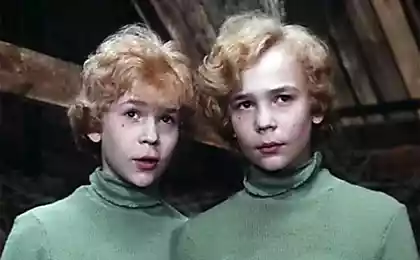858
Japan will release the last VHS VCR
End of era
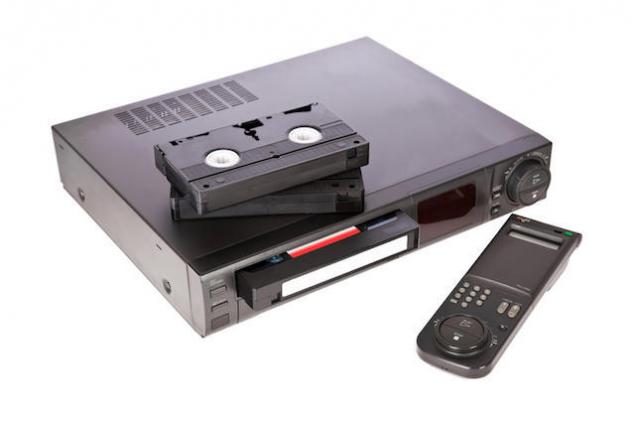
In July 2016 the company Funai Electric Company will release the last VHS VCR standard. The firm remained last in Japan, to continue production of such equipment. According to the Nikkei financial agency, the decision to curtail production was made in connection with a reduction in demand and the complexity of the control components for the production.
Company Funai VCRs produced foil factory in China and sold worldwide under the Sanyo brand. In the past year have been sold worldwide 700,000 VCRs.
Sony has stopped the release of videotapes in competing with VHS Betamax standard in March this year, and the VCR is not released since 2002. The same thing in the past made by other manufacturers VCRs VHS, including Panasonic.
VHS video standard invented the company JVC. Presentation of the first in the world of VCR JVC HR-3300 took place on September 7, 1976 in the conference room in Tokyo Hotel "Okura". This miracle of Japanese technical thought - consumer VCR - just two months fell short of his 40th anniversary
.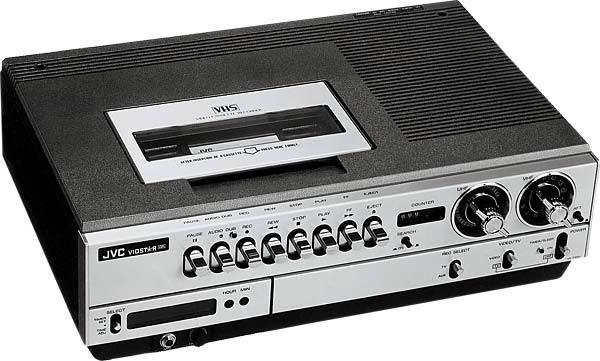
JVC HR-3300. The world's first video cassette recorder standard VHS
The competing Betamax standard is better developed by Sony. In the 80s and 90s, these two videotapes format fought for supremacy, but in the market of home video systems won VHS (Video Home System).
As a result, VHS video became a worldwide standard, and in the Soviet Union and more a symbol of perestroika, freedom and coming of capitalism. Home VCRs had been a symbol of prestige and wealth. It is rumored that in the Soviet era Japanese VCR could be exchanged for a car.
In order to satisfy the people's demand, the Soviet Union was launched production of the first popular home video recorders "Electronics VM-12" (approximate copy of the Japanese Panasonic NV 2000). He was released in 1982. By the time the possession and use of VCRs in the USSR was more or less safe. Almost stopped raids on apartments Precinct citizens with the institution of criminal cases-per-view erotic.
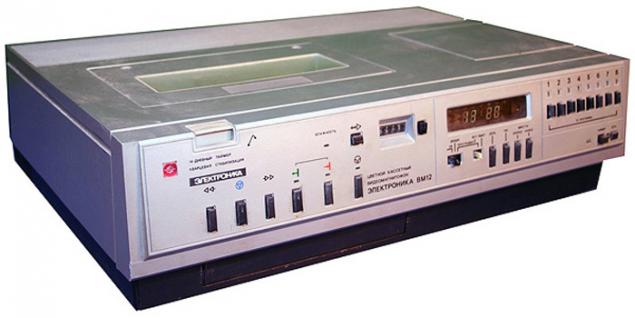
«Electronics VM-12»
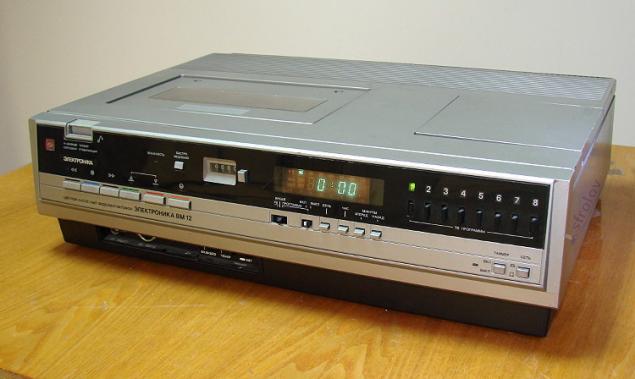
Panasonic NV 2000
VCR "Electronics VM-12" was issued in the years 1982-1995 NGO "Electronics" (Voronezh), the plant "Videophone" (Voronezh), "Spectrum" (Novgorod), "the name of 24 party congress Factory" (Novgorod), "Tantalus" (Saratov) and "Positron" (Leningrad).
Despite all the efforts of Soviet industry, much more quality and it remained prectizhnymi Japanese VCRs or, as they were called by the people, "VCR". In addition to order a more stylish look, they were technically more advanced and "chewed" film.
If a Japanese VCR could be exchanged for a car, several VCRs - even an apartment in Moscow or Leningrad. Some modern business oligarchs started like this:. Scarce bringing things from abroad, or to make a fortune on the black marketeering
Appearance VHS tape is familiar to all who were born in the USSR. In a standard cassette placed 180 minutes of recording time, which is usually enough for two film. At the end of the tape pasted a sticker, which is usually at the hands of the content of recorded cassettes.

Cassettes reused and passed each other. Later, there were video salon where a few people in a small room could see the TV movie fresh from a VCR. Then came the era of video items, which were given cassettes rented for a small fee. Who would these items pirated video call, but then no one thought about the nuances of copyright and related rights.
Most of the movies sounded somewhat legendary interpreters: Volodarsky, Gavrilov and Mikhalev
.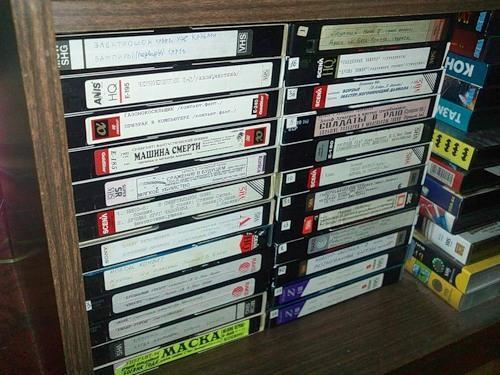
All over in the DVD era, cable TV and internet.
Even a little surprising that Japanese companies are still engaged in the production of video recorders. But now it has come to an end. Last Japanese VCR is come off the assembly line in July 2016, and more of them will never happen. The end of the era of VHS.
R.I.P.
P. S. Though they VCRs removed from production, but VHS tape at auction today can sell expensive than ever. The cost comes to some $ 2,000. According to the collectors, on DVD, Blu-ray and other digital copies of classic films look "too clean", not as it is necessary. On the digital copies of visible defects - defects of the actress, who filmed close-up, ugly makeup and stuff. Sometimes corny spoils the impression of the movie, when viewed in its high quality.
Perhaps the same can be said about the translation of "nasal" Volodarsky and his colleagues. These old amateur translations seemed a hundred times better than the current vociferous professional dubbing.
According to some collectors, VHS tapes in the future become a kind of vinyl audiophile (sale of vinyl records grow in recent years), so it is too early to bury VHS.
Source: geektimes.ru/post/278686/

In July 2016 the company Funai Electric Company will release the last VHS VCR standard. The firm remained last in Japan, to continue production of such equipment. According to the Nikkei financial agency, the decision to curtail production was made in connection with a reduction in demand and the complexity of the control components for the production.
Company Funai VCRs produced foil factory in China and sold worldwide under the Sanyo brand. In the past year have been sold worldwide 700,000 VCRs.
Sony has stopped the release of videotapes in competing with VHS Betamax standard in March this year, and the VCR is not released since 2002. The same thing in the past made by other manufacturers VCRs VHS, including Panasonic.
VHS video standard invented the company JVC. Presentation of the first in the world of VCR JVC HR-3300 took place on September 7, 1976 in the conference room in Tokyo Hotel "Okura". This miracle of Japanese technical thought - consumer VCR - just two months fell short of his 40th anniversary
.

JVC HR-3300. The world's first video cassette recorder standard VHS
The competing Betamax standard is better developed by Sony. In the 80s and 90s, these two videotapes format fought for supremacy, but in the market of home video systems won VHS (Video Home System).
As a result, VHS video became a worldwide standard, and in the Soviet Union and more a symbol of perestroika, freedom and coming of capitalism. Home VCRs had been a symbol of prestige and wealth. It is rumored that in the Soviet era Japanese VCR could be exchanged for a car.
In order to satisfy the people's demand, the Soviet Union was launched production of the first popular home video recorders "Electronics VM-12" (approximate copy of the Japanese Panasonic NV 2000). He was released in 1982. By the time the possession and use of VCRs in the USSR was more or less safe. Almost stopped raids on apartments Precinct citizens with the institution of criminal cases-per-view erotic.

«Electronics VM-12»

Panasonic NV 2000
VCR "Electronics VM-12" was issued in the years 1982-1995 NGO "Electronics" (Voronezh), the plant "Videophone" (Voronezh), "Spectrum" (Novgorod), "the name of 24 party congress Factory" (Novgorod), "Tantalus" (Saratov) and "Positron" (Leningrad).
Despite all the efforts of Soviet industry, much more quality and it remained prectizhnymi Japanese VCRs or, as they were called by the people, "VCR". In addition to order a more stylish look, they were technically more advanced and "chewed" film.
If a Japanese VCR could be exchanged for a car, several VCRs - even an apartment in Moscow or Leningrad. Some modern business oligarchs started like this:. Scarce bringing things from abroad, or to make a fortune on the black marketeering
Appearance VHS tape is familiar to all who were born in the USSR. In a standard cassette placed 180 minutes of recording time, which is usually enough for two film. At the end of the tape pasted a sticker, which is usually at the hands of the content of recorded cassettes.

Cassettes reused and passed each other. Later, there were video salon where a few people in a small room could see the TV movie fresh from a VCR. Then came the era of video items, which were given cassettes rented for a small fee. Who would these items pirated video call, but then no one thought about the nuances of copyright and related rights.
Most of the movies sounded somewhat legendary interpreters: Volodarsky, Gavrilov and Mikhalev
.

All over in the DVD era, cable TV and internet.
Even a little surprising that Japanese companies are still engaged in the production of video recorders. But now it has come to an end. Last Japanese VCR is come off the assembly line in July 2016, and more of them will never happen. The end of the era of VHS.
R.I.P.
P. S. Though they VCRs removed from production, but VHS tape at auction today can sell expensive than ever. The cost comes to some $ 2,000. According to the collectors, on DVD, Blu-ray and other digital copies of classic films look "too clean", not as it is necessary. On the digital copies of visible defects - defects of the actress, who filmed close-up, ugly makeup and stuff. Sometimes corny spoils the impression of the movie, when viewed in its high quality.
Perhaps the same can be said about the translation of "nasal" Volodarsky and his colleagues. These old amateur translations seemed a hundred times better than the current vociferous professional dubbing.
According to some collectors, VHS tapes in the future become a kind of vinyl audiophile (sale of vinyl records grow in recent years), so it is too early to bury VHS.
Source: geektimes.ru/post/278686/





